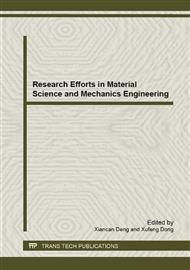p.293
p.298
p.304
p.309
p.314
p.319
p.324
p.329
p.333
Heat Transfer Modeling for Vaporizing in Vacuum Electron Beam Welding on Magnesium Alloy
Abstract:
A heat transfer model for vaporizing in vacuum electron beam welding on magnesium alloy is developed based on the laws of heat conduction and energy conservation. The vaporizing time of the main metal elements in AZ series magnesium alloy is calculated using the model. The results show that the vaporization of Mg element will precede the Zn element under the affecting of high energy density electron beam. The vaporizing times of alloying elements are not entirely dependent on the level of the boiling point, to a certain extent, also dependent on the thermal diffusivity and are closely related to the latent heat of vaporizing and melting of the materials. The change of beam spot diameter of electron beam also greatly alters the heat transfer characteristics of electron beam heat source beam. As the strong vaporizing effect of Mg element will occur within several milliseconds, the keyhole induced by the metal elements vaporizing is formed only within several milliseconds, but also the deep penetration welding effect of vacuum electron beam welding of magnesium alloys will be obtained in a very short period of time.
Info:
Periodical:
Pages:
314-318
Citation:
Online since:
April 2013
Authors:
Price:
Сopyright:
© 2013 Trans Tech Publications Ltd. All Rights Reserved
Share:
Citation:


